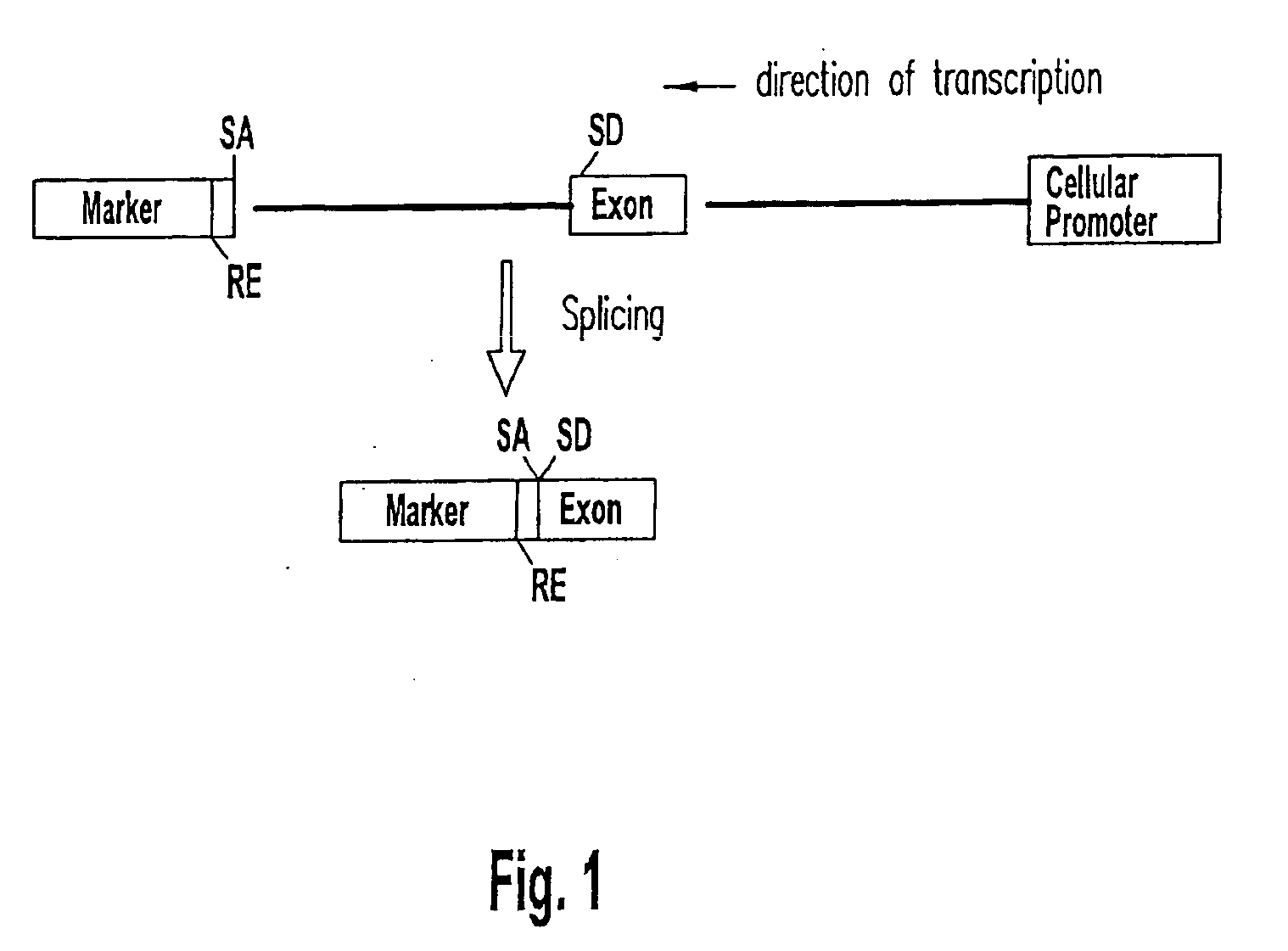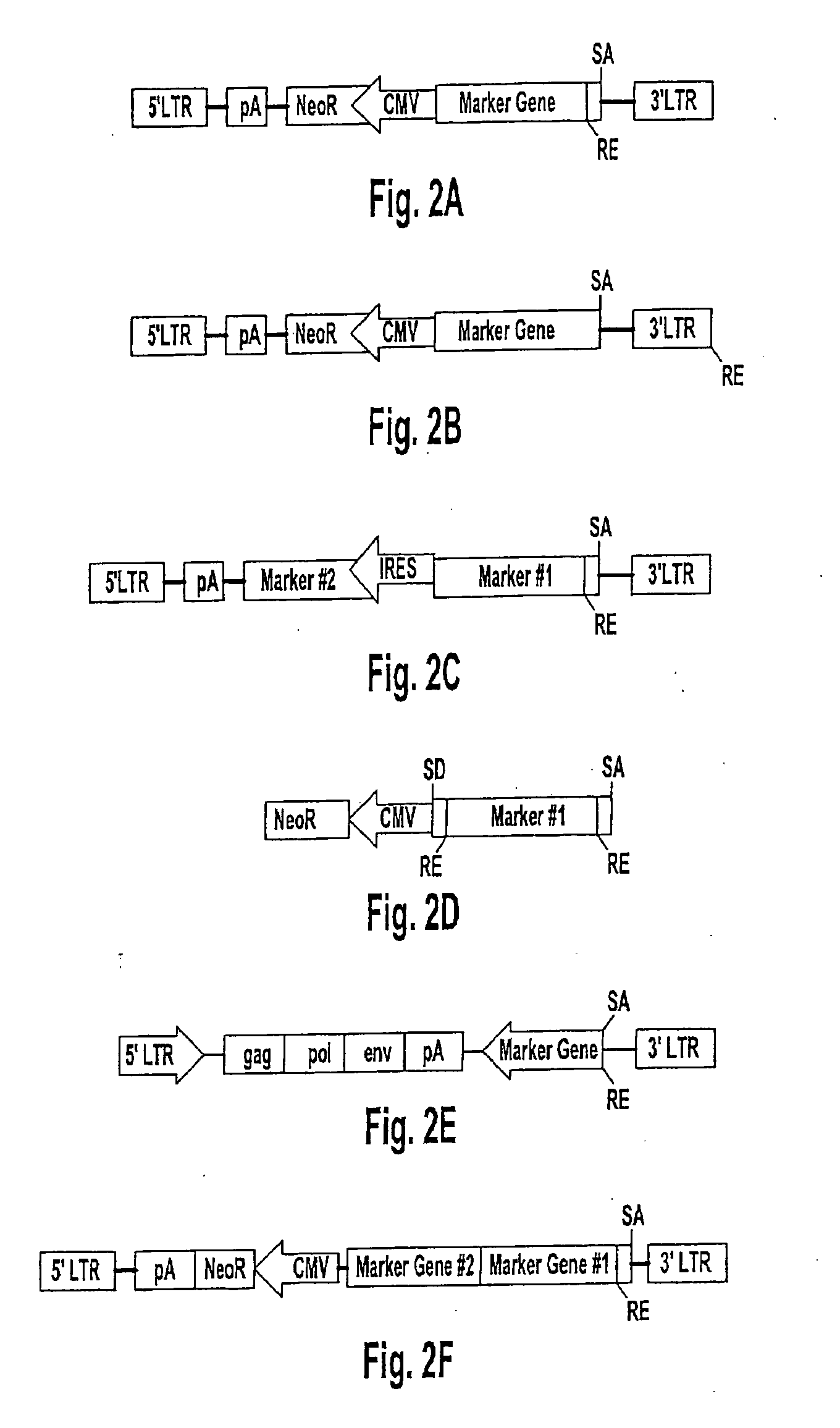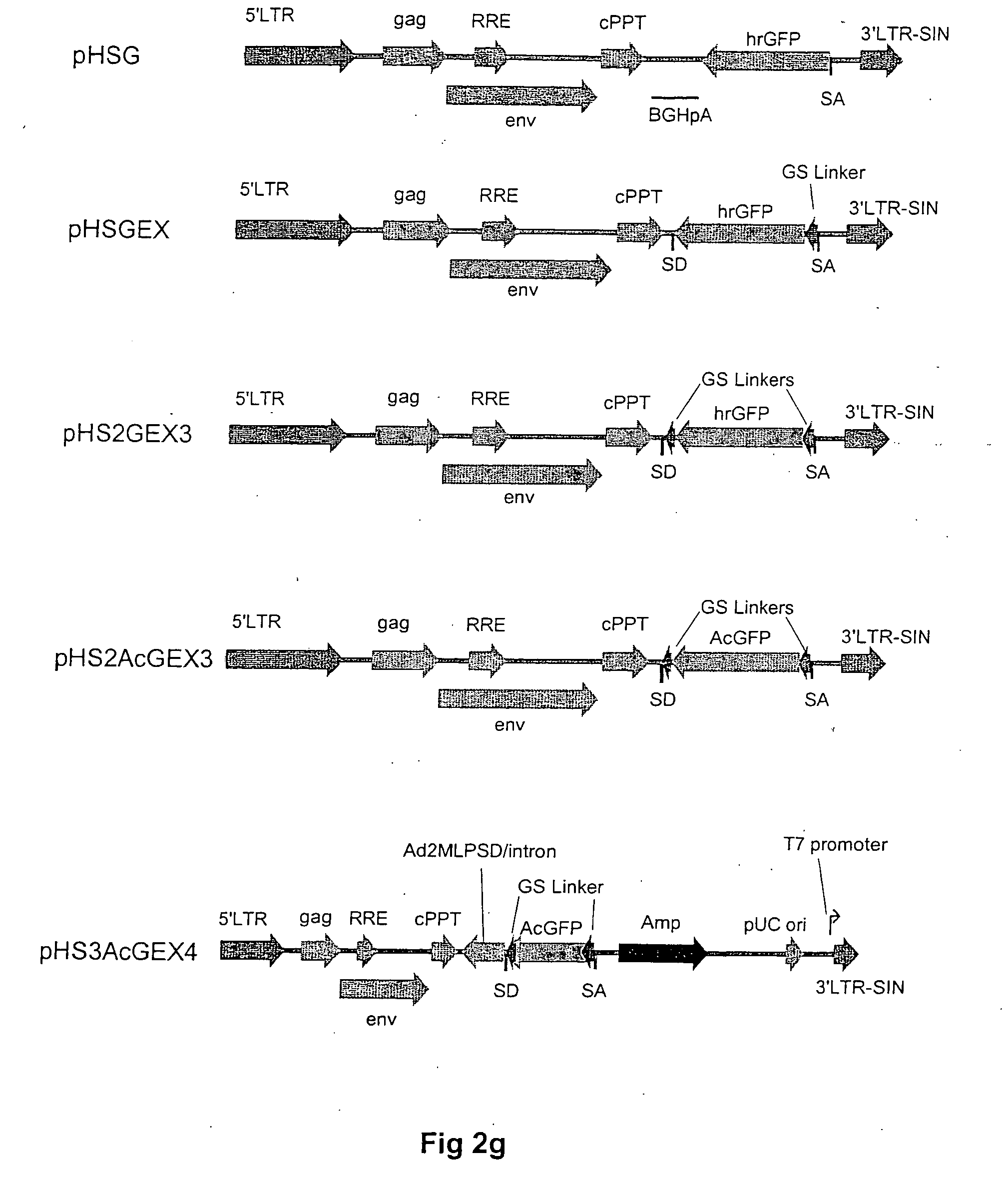Methods and compositions for elucidating protein expression profiles in cells
a protein expression and cell technology, applied in the field of functional genomics, can solve the problems of large human complexity, mrna based genomics, and conservative estimates, and achieve the effects of reducing the complexity of human cells, and improving the accuracy of protein expression
- Summary
- Abstract
- Description
- Claims
- Application Information
AI Technical Summary
Benefits of technology
Problems solved by technology
Method used
Image
Examples
example 1
Results and Descriptions of Vectors
[0222] A polynucleotide construct (Gene Trap (GT) vector) was constructed with a splicing acceptor (SA) signal of human y-globin intron #2 in front of humanized renilla green fluorescence protein (hrGFP) to ensure that the hrGFP can be spliced into the exons of trapped genes (FIGS. 4-6). This SA-hrGFP then was inserted into a retroviral vector in an anti-sense orientation to avoid the interference of the transcription function of 5′ LTR, furthermore, the 3′ LTR of this retroviral vector has been altered with a deletion of U3 region. The duplication of this deletion in 3′ LTR into 5′ LTR during reverse transcription disables the 5′ LTR promoter function. Therefore, this vector becomes a self-inactivation (SIN) vector. For titer analysis and, to ensure the existence of GT vector in retrovirally transduced (infected) cells, a G418 selection marker gene (NeoR) driven by human cytomegalovirus intermediate-early (CMV IE) promoter was inserted in the vec...
PUM
| Property | Measurement | Unit |
|---|---|---|
| Fraction | aaaaa | aaaaa |
| Fraction | aaaaa | aaaaa |
| Fraction | aaaaa | aaaaa |
Abstract
Description
Claims
Application Information
 Login to View More
Login to View More - R&D
- Intellectual Property
- Life Sciences
- Materials
- Tech Scout
- Unparalleled Data Quality
- Higher Quality Content
- 60% Fewer Hallucinations
Browse by: Latest US Patents, China's latest patents, Technical Efficacy Thesaurus, Application Domain, Technology Topic, Popular Technical Reports.
© 2025 PatSnap. All rights reserved.Legal|Privacy policy|Modern Slavery Act Transparency Statement|Sitemap|About US| Contact US: help@patsnap.com



